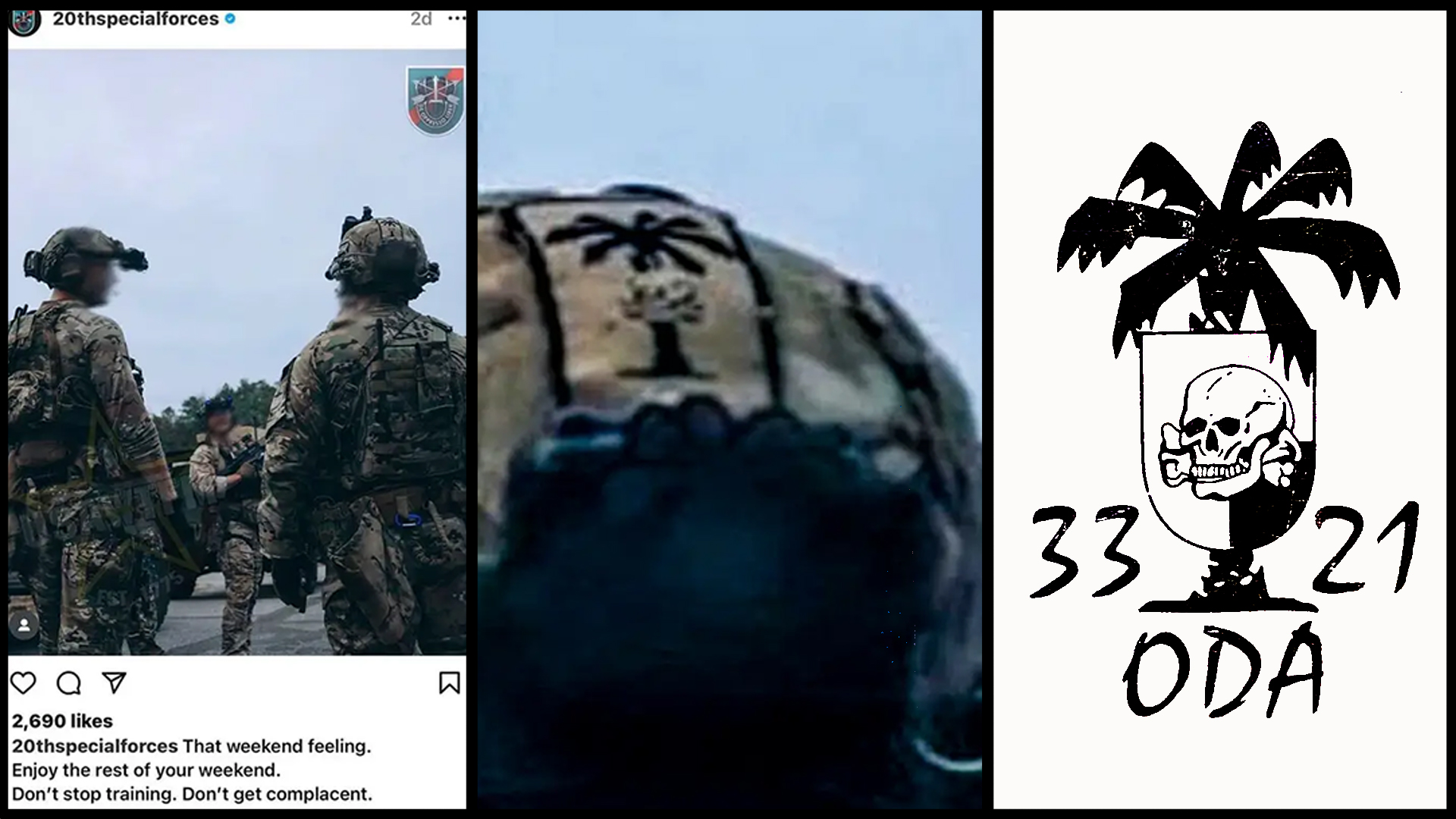

The Special Forces team patch depicting a particular skull and crossbones used by the Nazis in World War II was previously banned in 2022 after an informal investigation, according to an Army spokesperson.
The patch seen in a picture of a 20th Special Forces Group soldier featured an SS Totenkopf — also referred to as “Death’s Head” — on a palm tree similar to a patch used by Nazi Germany’s AfrikaKorps. The photo was posted to the Alabama-based, National Guard unit’s Instagram on Sunday, and prompted a new investigation shortly after. The caption read, “That weekend feeling. Enjoy the rest of your weekend. Don’t stop training. Don’t get complacent.”
In an initial response to the controversy on 20th Special Forces Group’s Instagram post, they replied to a commenter “…It’s a 3rd group team patch taken out of context.”
“The patch is an unofficial patch not approved by the command in any kind of way from Third Special Forces Group,” said Maj. Russell Gordon, spokesperson for 1st Special Forces Command. “People started looking at the symbols and researching the symbols and [were] able to clearly identify the history of it. Then the command banned it back in approximately 2022.”
During the informal investigation in 2022, Gordon said officials couldn’t find the source of the patch or the person who created it in the first place. Officials concluded that the soldiers wearing the patch were ignorant of the symbolism and its historical meaning.
“There was nothing that they found that clearly identified somebody trying to display any images of hate,” Gordon said.
On Wednesday, the Instagram account for the 20th Special Forces Group posted a statement about the patch, emphasizing accountability.
“The use of symbols and patches depicting historic images of hate are not tolerated within our organization. We are investigating this misuse and ensure accountability for our findings. We are focused on commitment to our families, teams and Nation, accountability in enforcing standards, and trust that we are consistently learning. As we move forward, we will focus on enforcing accountability in our formation,” the statement said.
Subscribe to Task & Purpose today. Get the latest military news and culture in your inbox daily.
The picture was deleted after various Twitter and Instagram accounts shared the photo and gained hundreds of comments on social media. The social media posts are what prompted the Army’s investigation, Gordon said.
After the formal inquiry was announced, another version of the Nazi-era image popped up on Reddit, but this time it was a sticker on a range door at Fort Liberty, North Carolina. The sticker appears to show the same imagery found on the patch but with the additional context of belonging to Special Forces Operational Detachment Alpha (ODA) 3321, a Special Forces team in 3rd Special Forces Group.
While announcing the investigation earlier this week, Col. Mike Burns, a spokesperson for U.S. Army Special Operations Command said, “The use of symbols and patches depicting historic images of hate are not tolerated and a clear violation of our values.”
It’s unclear if the soldier in the 20th Special Forces Group Instagram photo knew the patch was banned. However, Special Forces teams are tight-knit groups of soldiers who often stay connected even after leaving their team. The investigation hopes to answer whether the use of the patch by the soldier was malicious or just plain ignorance.
“The command is going through and making sure that that patch is removed from anywhere else that it didn’t get removed from in 2022,” Gordon said.
Soldiers who violate the military’s prohibition on extremism can face a range of punishments according to the Uniform Code of Military Justice, which includes separation from service.
Regardless of the intent, Gordon said the Army should reflect on the incident.
“I think this is a good teaching moment to go back and re-look at some of that training that the command can do,” Gordon said.
The latest on Task & Purpose
- Air Force fires two medical commanders at Joint Base Charleston
- Navy fires commodore of Naval Special Warfare Group Eight
- Families at Edwards Air Force Base living in RVs for housing relief
- Niger cuts ties with US military
- Navy has fired at least 3 commanding officers for DUIs in 2024